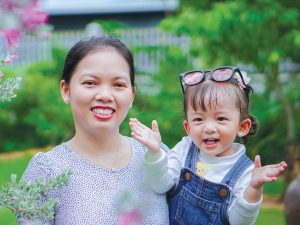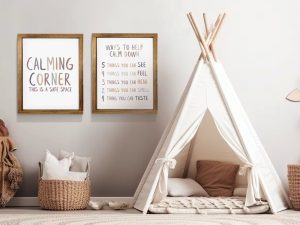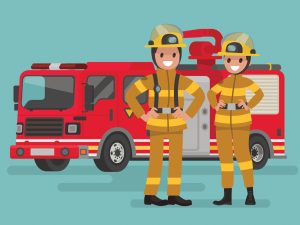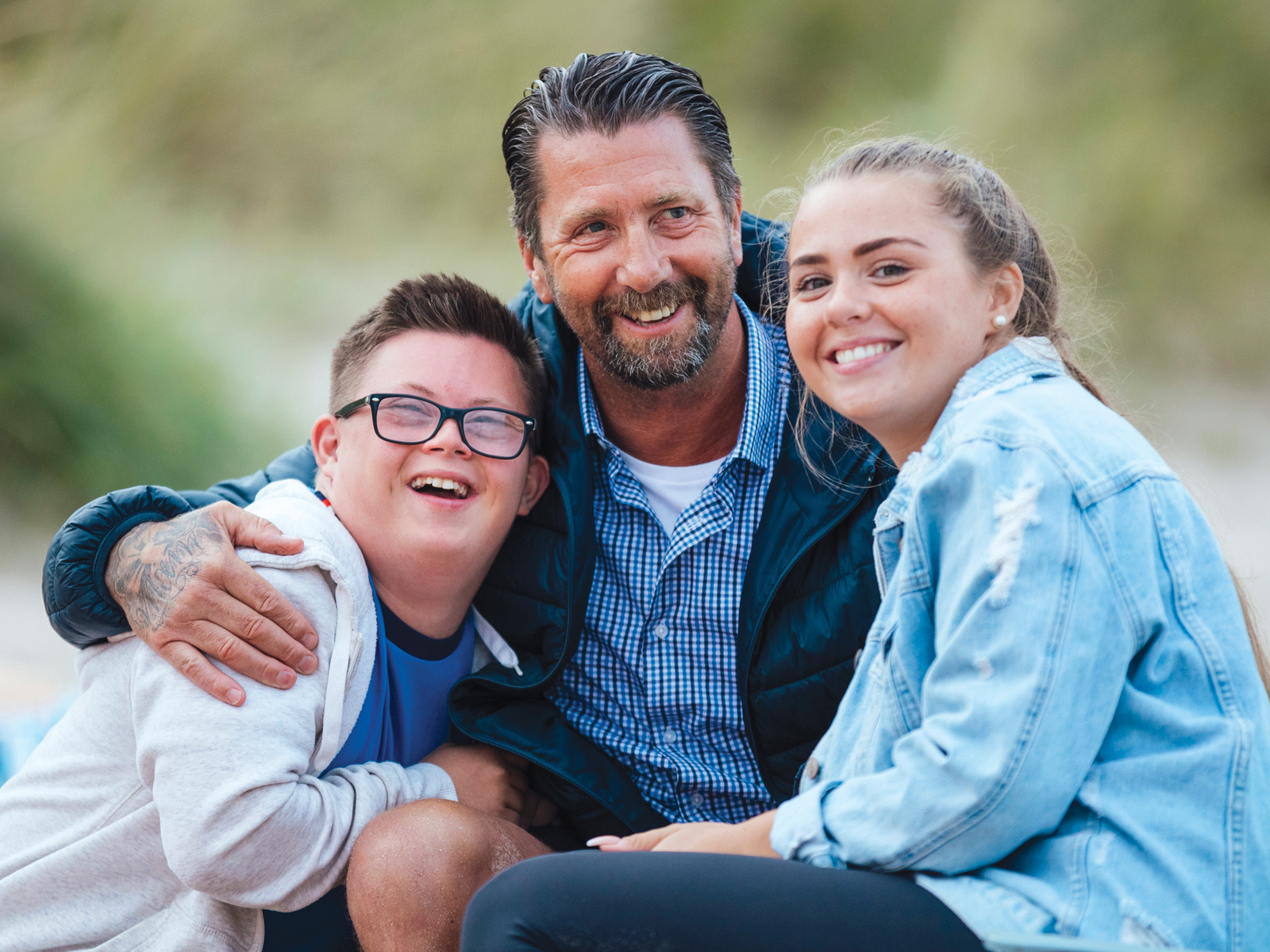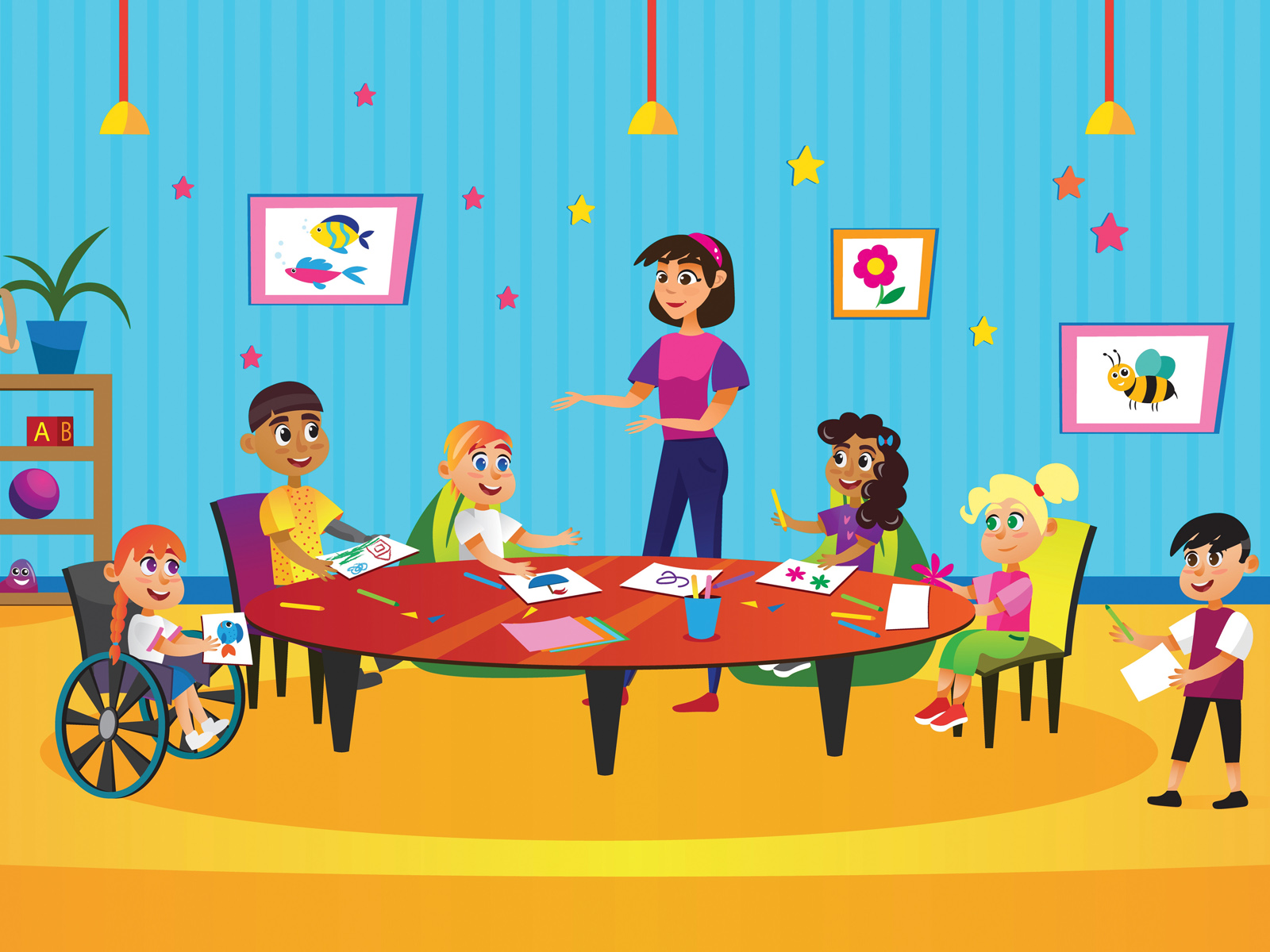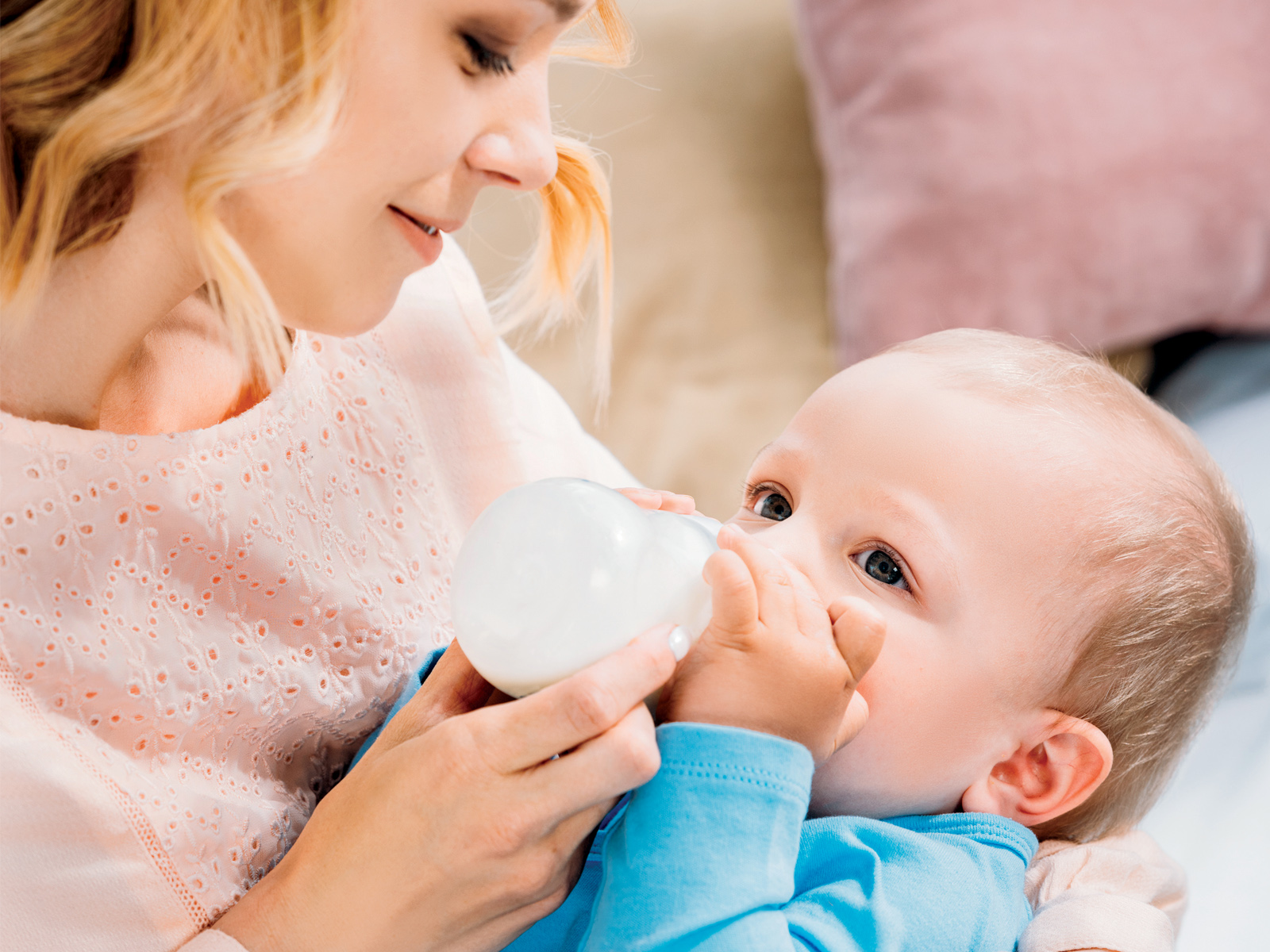Helping kids join in and have fun with adapted recreational equipment
By Kathy Foisey
Studies have shown that active living is important for a long and happy life. We are told time and again that it’s important to take up hobbies and find meaningful ways to participate in life. We all possess a very basic human need to belong—to have friends and be included. For kids with special needs or mobility challenges, social and recreational isolation can be very real, leading to impacts on self-esteem and social development.
The good news is that our world is becoming more inclusive. We are seeing more and more accessible playgrounds, school yards and communities, and there are many resources available today that were not available even five years ago. Still, kids with special needs or mobility challenges are often excluded from activities that able-bodied children take for granted, such going for a bike ride or ice-skating, or joining in a game of pick-up basketball with friends.
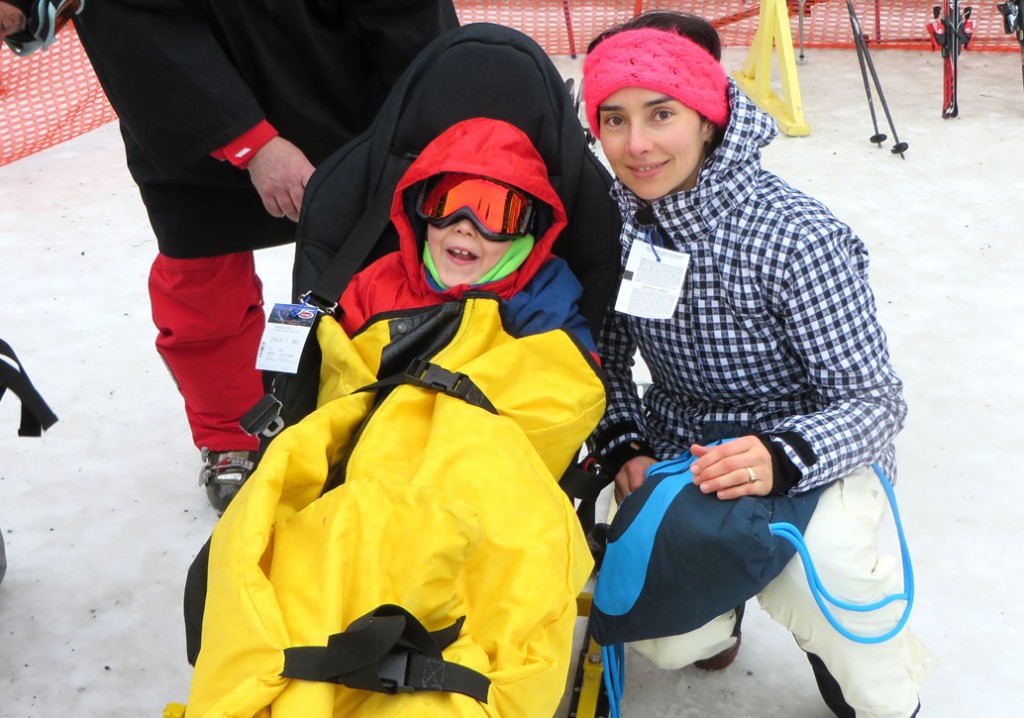 The reality is that many of the programs available to kids with special needs are in such high demand that families often face long waiting lists to get in. When we speak to the families who use our services at Holland Bloorview Kids Rehabilitation Hospital, we hear that it’s the day-to-day living activities that have the biggest impact on these kids’ lives.
The reality is that many of the programs available to kids with special needs are in such high demand that families often face long waiting lists to get in. When we speak to the families who use our services at Holland Bloorview Kids Rehabilitation Hospital, we hear that it’s the day-to-day living activities that have the biggest impact on these kids’ lives.
Getting in on the action
For kids with diverse needs and those who use assistive devices or mobility aids such as wheelchairs, walkers or braces, a simple adaptation for a bike or other common piece of sporting equipment can mean the difference between sitting on the sidelines and actively participating and having fun with their peers or family. A wide variety of adapted recreational equipment is available to help kids get involved in sports and recreation. Choosing the best equipment for your child can be challenging, so it’s important to understand your child’s needs and to try out a few things to see what works best. Arnold Lopez, therapeutic recreation specialist with Holland Bloorview Kids Rehabilitation Hospital, says, “Our equipment-loan program helps families participate and have a good time together. We have many different types of adaptive recreation equipment that they can borrow and try out to see what fits best with their child.”
Parents are the best advocates for their kids’ needs. All you have to do is ask another mom or dad and they have probably figured out some kind of solution or adaptation that has helped their child to stay involved and entertained. However, not everyone has seen the newer pieces of equipment, and some will have encountered barriers when it comes to the cost or suitability of equipment. “It’s important for a kid to try out different kinds of equipment,” says Arnold. “Take bikes for example, there are options. Find one that works. Some bikes are adapted to provide stability and support, while others are made so that children can use their hands to pedal instead of their feet.”
Tomas and Andrea
As the mother of twins Tomas and Martin, Andrea is always looking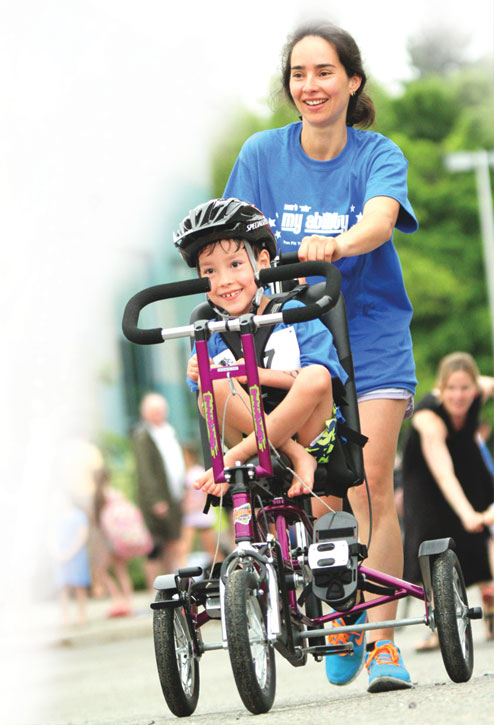 for ways to keep her two boys entertained. “The most important thing for me is to find ways to spend time together as a family,” she says, “being active and having fun together.” Tomas is a client of Holland Bloorview. Andrea describes Tomas as adventurous and sports-loving, with a keen interest in speed. He likes to try new things and especially to be part of a group. She says that he is a good observer and very engaged in what is going on around him.
for ways to keep her two boys entertained. “The most important thing for me is to find ways to spend time together as a family,” she says, “being active and having fun together.” Tomas is a client of Holland Bloorview. Andrea describes Tomas as adventurous and sports-loving, with a keen interest in speed. He likes to try new things and especially to be part of a group. She says that he is a good observer and very engaged in what is going on around him.
“The only thing that makes Tomas stand out from some of his peers,” says Andrea, “is that he has physical barriers that make certain activities difficult. In addition, social interactions are more challenging due his disability. He struggles with getting out there—he needs a bit of a push and encouragement to get involved or finish something he has started.
“My boys are the best of friends,” she continues, “and when you see them playing together it’s clear that Martin doesn’t see any limitations in his brother. They wrestle and challenge each other through imaginative games that they make up. I get so much pleasure from watching them.” A short time ago, Andrea noticed that Tomas was starting to be left on the sidelines while Martin was participating in winter activities that the family enjoys, such as skating and skiing. Through her interactions with other families and therapists at Holland Bloorview, Andrea was excited to learn about adapted equipment with additional supports to help kids such as Tomas take part in traditional sports and pursuits.
Time to join in
“The first equipment we tried was the ice sledge,” says Andrea, “the kind that is used in sledge hockey. We borrowed it and took it to our local skating rink. We all had a blast and Tomas really enjoyed skating. It was so amazing to see him having so much fun and to be able to do something together as a family.” Tomas and Andrea then borrowed a bike to take part in their community triathlon. Andrea signed up with a group of parents who wanted to find a way for their kids, who all needed modifications, to participate in the event.
“We reached out to the race organizers with a proposal and with some modifications that we would need to enjoy the day,” she says. “They were more than happy to accommodate our needs and we had a great time. “The first adaptation we asked for was for parents to be able to accompany their child in the swimming portion of the competition.
We also needed their consent to use the modified bikes in the cycling portion of the race. The bikes are really big, so we needed access to close parking and help unloading our equipment. The race organizers really made it possible and we had a fantastic time. You can see by the look on Tomas’s face in the pictures that being an ‘event biker’ was really special for him.”
Many parents and kids say that after testing out recreational equipment, their worlds open up in ways they could never have believed. So, use your imagination, ask for help from the health and sports professionals on your team and take the plunge, hit the road or head out to the park in exciting new ways.
 Inclusion 101—ideas for inclusive activities
Inclusion 101—ideas for inclusive activities
Whether you’re a classroom teacher, community program coordinator or parent organizing a play-date for your kids, there are many things you can do to ensure an inclusive environment in which all children can participate in the planned activities.
Here are a few things to keep in mind:
• Inquire about any special or diverse needs, and ask parents or primary caregivers about appropriate activities for their child.
• Focus on abilities and strengths, not limitations.
• Consider modifying the rules for games and activities. For example, you might play two-handed basketball, move a net or use a ramp for bowling.
• Inclusive environments benefit everyone by promoting awareness and acceptance, as well as learning from each other.
• Consider setting up a calm space to which kids can retreat, such as a quiet corner or an area with sensory activities to meet diverse needs.
• Have an open attitude and let kids be kids. They will often push their own boundaries and let you know when they want or need help.
• Inclusion is not a disability issue but a basic right. Everyone has the right to be included and treated equally.
Kathy Foisey is a communications associate at Holland Bloorview Kids Rehabilitation Hospital, and the communications partner for the participation and inclusion program.


